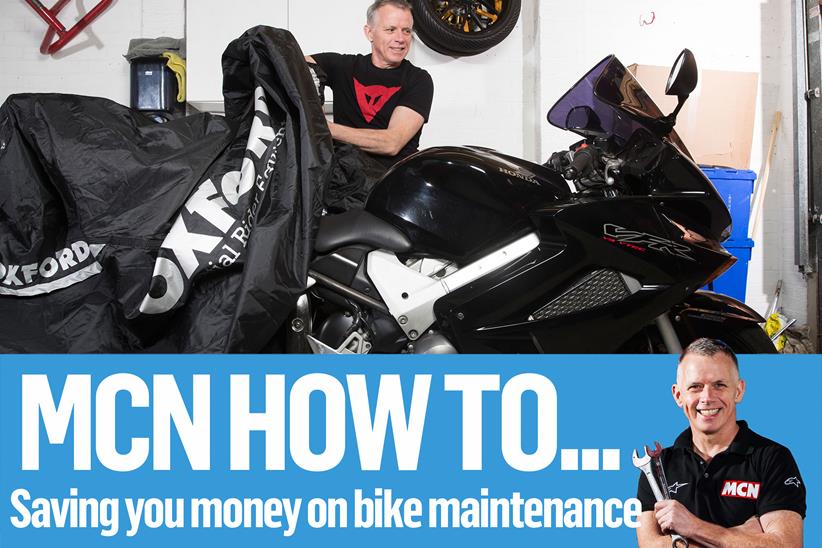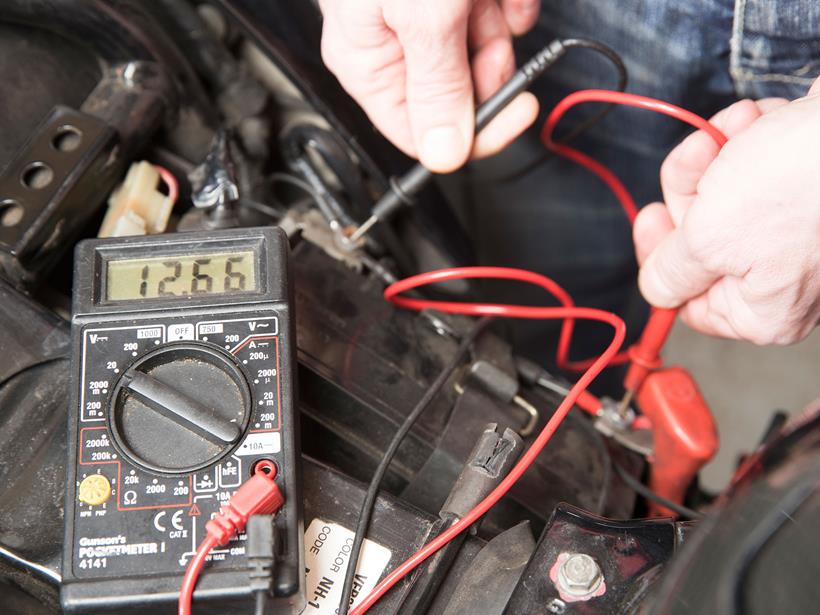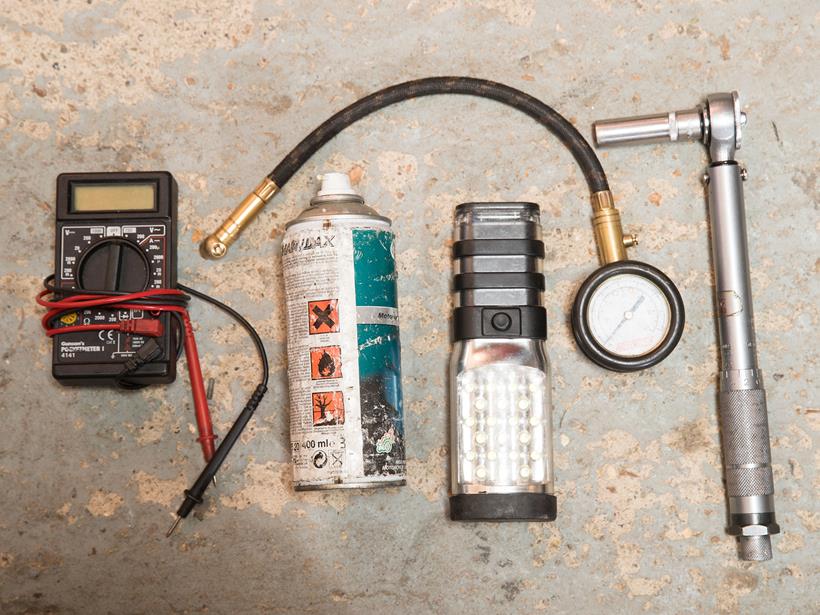If you haven't ridden your motorbike for a while then use this guide to getting it back on the road

Plenty of riders lay a bike up over winter. Whether you’ve got a minter you wouldn’t dream of exposing to gritted roads, you don’t enjoy riding in the cold or even if you’ve been injured, ill or skint, it’s an exciting time when you can finally pull the cover back off!
But before you get overexcited, swing a leg over, fire it up and whiz off down the road, there are a few checks and maintenance jobs you should do to make sure it’s safe and you’re not doing any damage. This process will be easier if you hibernated you bike properly after your last ride.
It doesn’t take a tool chest either; find what you need at the bottom of the page. Or, if you’re just starting to get to grips with home maintenance, check out MCN’s list of everything you need for a basic motorcycle toolkit.
Check your pressures

Tyre manufactures often recommend you over-inflate your rubber before you leave the bike laid up over winter. This is to prevent the tyre carcass being damaged as the bike loses pressure over time. Even if you didn’t do this, you will need to check the pressures with a reliable pressure gauge as they are likely low following a lay-up.
Check in your manual for the correct pressures and take the opportunity to thoroughly check their overall condition, looking for cracks in between the treads. If you need new rubber, you could consider changing your tyres at home.
- Related: Best motorcycle wheel and tyre tools and accessories
- Related: Best puncture repair kits for motorcycle tyres
- Related: Best sports-touring motorcycle tyres
Refill with fuel

Ideally, before storing your bike you would’ve run your fuel down to a minimum, as opposed to leaving it full to the brim. The combustible ‘light-ends’ of the fuel will evaporate and render the petrol less volatile.
By adding five litres of fresh petrol, you will effectively be reinvigorating any fuel left, preventing poor starting. Use a funnel with a filter to stop any gunk getting in.
How’s your battery?

If your garage has electricity it is easy to leave the bike connected up to a trickle charger – but if you rent a lock-up you’ll need to check the battery. A healthy power cell should have 12.5v or upwards. Anything less will require charging, or perhaps even a new battery. When you do the voltage check, make sure the ignition is off.
Does it have enough oil?

Take the bike off its stands and try to hold the bike upright so it’s balanced and then check the amount visible on the sight glass. Engines with dipsticks need to be held upright and balanced, but check with your manual as to whether the dipstick should be dipped in or screwed in prior to taking a reading.
Check the seals

Fork seals can fail if a bike has been sitting for a long period of time. Wipe a tissue around the stanchion and seal to look for any weeping oil. In a severe case, oil would’ve leaked down the forks and possibly onto discs and calipers, so ensure you are thorough. Do the same for the rear shock.
If you do have a leak, changing your fork seals is an easier job than you might think and can be done at home by intermediate home mechanics.
Start up and check fluid levels

Most bikes require minimal or no throttle to start up from cold but be patient, the engine may need to crank over a few times before it fires up. Once running, let it warm up, keeping an eye out for any leaks from the oil and coolant systems. Re-check oil and coolant levels once the bike is cool again.
Give the chain some loving

Place the bike on its centrestand or a paddock stand and check the chain tension and adjust if necessary. If you didn’t do it when you stopped riding, your chain may need a good clean, too. Now use a quality chain lube, applying it from the inside and mask the background with a cloth to prevent overspray reaching the tyre. Make sure the wheel spindle is correctly torqued up to spec, too.
How are your nuts?

Make a thorough check of your bike’s crucial nuts and bolts. If you have had the bike in bits over the winter for cleaning or repair, do a final check over the bike for safety. Things to include would be caliper bolts, spindle nuts and fork leg pinch bolts. The correct way to check tightness is to undo the bolt first and then tighten up to the correct torque setting with a torque wrench.
Show me your papers

These days the ‘paperless’ tax disc system gives no immediate visual clue, but the good news is that it’s easy to check online – with a mobile-friendly website. Just type in your registration number to check the status of your bike, along with the exact date that each one expires. That just leaves you to check your bike insurance is valid!
Tools needed to recommission a motorbike

- Chain lube: Use a good chain lube that’s designed to resist fling if you don’t want to be cleaning it off your rear wheel.
- Torch: Great to check all the nooks and crannies of your bike for fluid leaks.
- Tyre pressure gauge: It doesn’t have to be a fancy digital one, an old fashioned one will do. Use the same pressure gauge every time for consistency.
- Multimeter: A handy tool for a home mechanic that can help to track down electrical gremlins.
- Torque wrench: A torque wrench is the tool we should all have but many don’t. Remove the guesswork from your maintenance.

